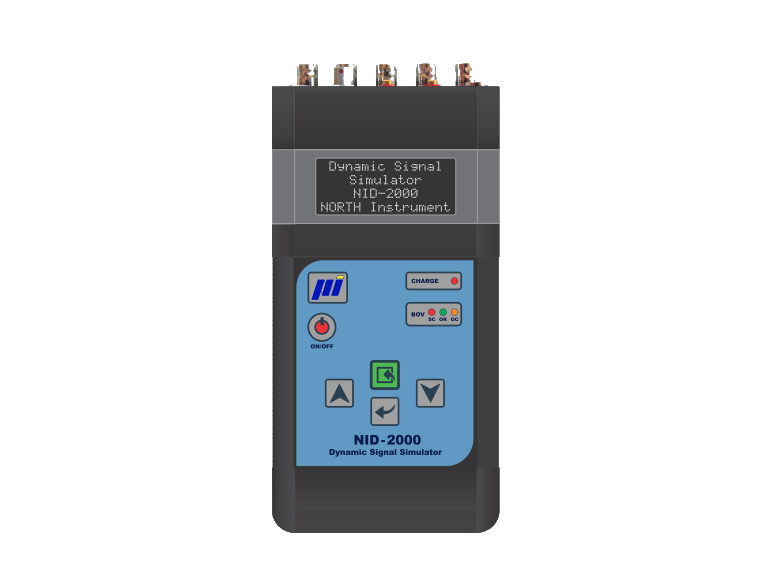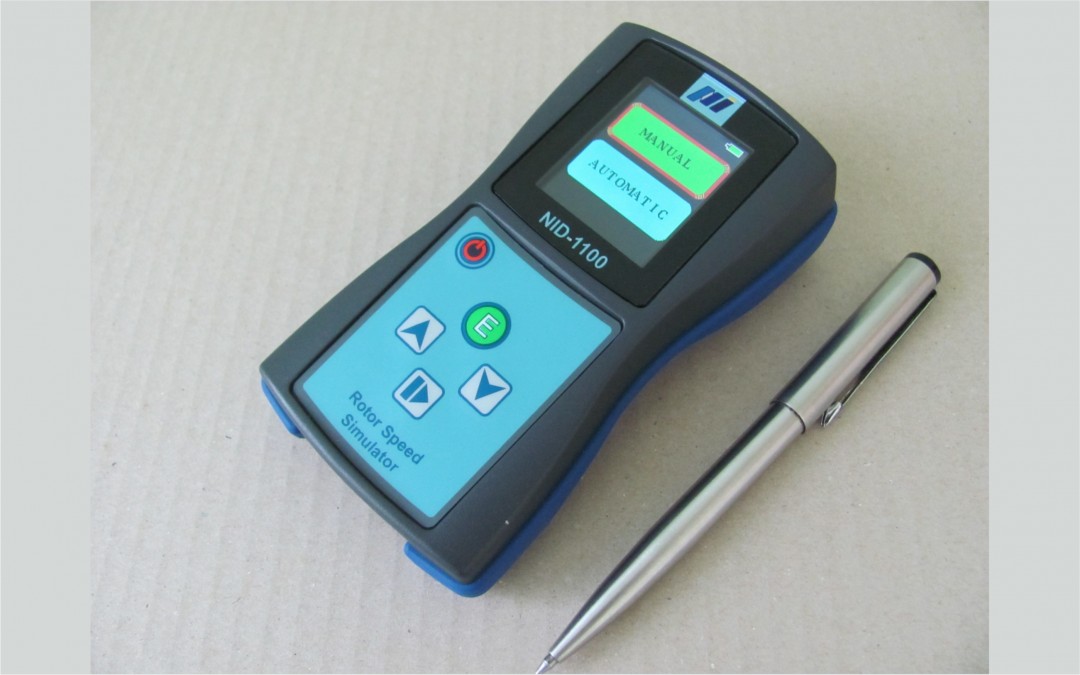
by Admin | Feb 20, 2019 | Calibration Instruments, Our Instruments, Sensor Simulators
Description NID-2000/NID-2000P Dynamic Signal Simulator is a battery operated instrument that is used to electronically simulate variety of outputs from various types of sensors. This device uses a menu-driven 4×16 character LCD display to establish appropriate settings. NID-2000P Precision Dynamic Signal Simulator is precision version of NID-2000 Dynamic Signal Simulator (please see datasheet). The key panel contains five sealed switches marked with arrows, Enter (green button), Back and ON/OFF. Power is supplied from 4 AA rechargeable, internally mounted Ni-MH batteries which can be recharged with a regulated 9Vdc source. Connection to PC is established over the front mounted LEMO connector. PC mode will be automatically started after inserting proper cable into device. Output signal is user selectable from: single-ended voltage (mV), single-ended charge (pC), differential charge (pC), current-sinking IEPE (ICP®), loop powered current source (mA), tachometer (TTL), flow (TTL), OSO® (Optical Speed Output) and BOV (Bias Output Voltage). Frequency range is 1Hz to 10kHz; RMS output voltage is from 10mV to 10V or 10pC to 10.000pC. Outputs can be provided in acceleration, velocity, displacement, voltage or charge. Application note Suitable for inspecting measurement lines according to ISO 10816 standards. Device is especially designed for Condition Monitoring Systems (CMS) and/or Vibration Monitoring Systems (VMS) that are independent or connect to SCADA/DCS Systems. Features Datasheet Software User Manual Specification Price Simulates various sensor and transmitter signal outputs Fully compliant with the requirements of ISO 10816 (ISO 20816) standards Operates in two modes: standalone and PC based The software includes a sensors/transmitters database of the major manufacturers Automatic the creation of reports in PC mode enabled Loop powered current source output Tachometer TTL...

by Admin | Jun 18, 2016 | Our Instruments, Sensor Simulators
NID-1100 Rotor Speed Simulator is a battery operated, handheld instrument which is used to electronically simulate outputs from various types of RPM sensors and transmitters in the range from 1.0 RPM to 60,000 RPM. NID-1100 uses a menu-driven, 1.8″ TFT display (160×128 pixel, 18-bit colors) to establish appropriate settings. The key panel contains five sealed switches: Up Arrow, Down Arrow, E (Enter), Run/Stop and On/Off. The operating modes are: Manual and Automatic. In Manual mode, the user can select the desired RPM value and the type of Output. Using Start/Stop key, the user can Start or Stop the output generation. During the generation of RPM output, the user can continually (On-line) increase or decrease the RPM value using Up or Down arrow. In Automatic Mode, the user can select the nominal RPM, desired acceleration time (for RPM from zero to nominal), steady state time for nominal RPM and deceleration time (for RPM from nominal to zero), in range from 1.0 sec to 999.0 sec. Using Start/Stop key, the user can Start or Stop the programed output generation. The user can select the Output signal from the following: RPM Tachometer Output (TTL Level), RPM Proximity Probe Output (powered by +24VDC), RPM Proximity Probe Output (powered by -24VDC), RPM OSO® Output. Electric connection with DUT (Device Under Test) is established over the front mounted LEMO (ODU) Connector. Optical connection with DUT is established over the OSO (Optical Speed Output) front mounted LED. Features Datasheet Software User Manual Specification Price Easy to use, menu-driven operation Simulates various RPM sensors output Manual and Automatic Operating Modes Output Range: 1.0 RPM to 60.000 RPM...





